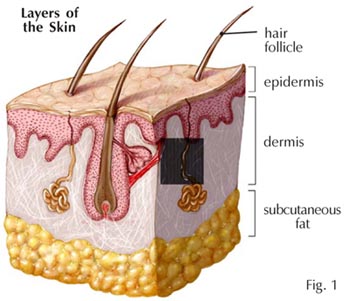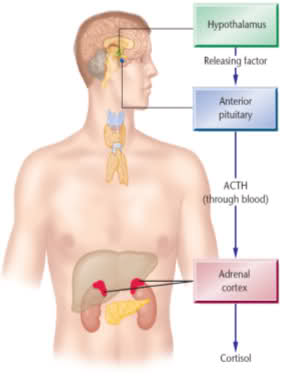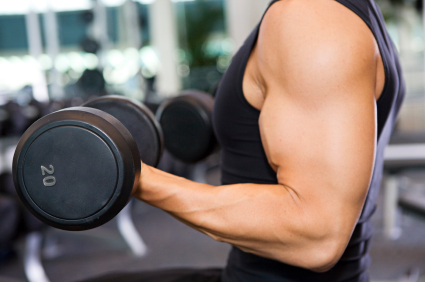
Aloe Vera Sports - Body Zone



The fastest way to shed subcutaneous fat...
Many people feel frustrated because the scales show they're losing weight, but the way they look in the mirror isn't changing. Despite hours of aerobic exercise and a bland diet of tasteless low-fat foods, they don't appear to be making any visible progress.
Many people feel frustrated because the scales show they're losing weight, but the way they look in the mirror isn't changing. Despite hours of aerobic exercise and a bland diet of tasteless low-fat foods, they don't appear to be making any visible progress.
What they don't realise is that fat comes off different parts of your
body depending on whether you lose weight with diet or exercise. Of course,
it's no secret that cutting back on your daily calorie intake will help you
lose weight. However, it's vital to remember that there's a big difference
between losing weight and losing fat.
The quantity of food in your diet dictates how much weight you lose.
The quality food in your diet dictates where that weight comes from.
For example, if your diet is high in processed or refined carbohydrates and low in protein and essential fatty acids, the chances are that much of the weight you lose will be in the form of muscle as well as fat.
The quantity of food in your diet dictates how much weight you lose.
The quality food in your diet dictates where that weight comes from.
For example, if your diet is high in processed or refined carbohydrates and low in protein and essential fatty acids, the chances are that much of the weight you lose will be in the form of muscle as well as fat.
Subcutaneous Fat
In much the same way, whether you lose weight using diet or exercise affects whether the lost fat comes from visceral or subcutaneous fat. Visceral fat surrounds and protects your internal organs. Subcutaneous fat is stored under your skin. The more often you exercise, the more subcutaneous fat you'll lose.
Gender
The rate of fat loss also varies between men and women, regardless of the type of exercise you do.
Men lose fat first from their trunk, then their arms, followed by their legs. The term "trunk" simply refers to the parts of your body that aren't your head, arms or legs.Weight loss in women appears to be greater in the arms, followed by the trunk, then the legs.The distribution of subcutaneous fat is also strongly affected by your genetics. In other words, two people could follow exactly the same exercise program, but the loss of subcutaneous fat would not be the same. The speed and location of subcutaneous fat loss will differ from person to person. So, although you can exercise in a way that targets subcutaneous fat, there's no guarantee that it will come off the places you want as fast as you want. More interesting still, the distribution and amount of subcutaneous fat is also affected by your hormones. And these hormones are under the direct influence of the food you eat and the type of exercise you do.
In much the same way, whether you lose weight using diet or exercise affects whether the lost fat comes from visceral or subcutaneous fat. Visceral fat surrounds and protects your internal organs. Subcutaneous fat is stored under your skin. The more often you exercise, the more subcutaneous fat you'll lose.
Gender
The rate of fat loss also varies between men and women, regardless of the type of exercise you do.
Men lose fat first from their trunk, then their arms, followed by their legs. The term "trunk" simply refers to the parts of your body that aren't your head, arms or legs.Weight loss in women appears to be greater in the arms, followed by the trunk, then the legs.The distribution of subcutaneous fat is also strongly affected by your genetics. In other words, two people could follow exactly the same exercise program, but the loss of subcutaneous fat would not be the same. The speed and location of subcutaneous fat loss will differ from person to person. So, although you can exercise in a way that targets subcutaneous fat, there's no guarantee that it will come off the places you want as fast as you want. More interesting still, the distribution and amount of subcutaneous fat is also affected by your hormones. And these hormones are under the direct influence of the food you eat and the type of exercise you do.
Shedding Fat - Building Muscle

Testosterone
When it comes to shedding fat while preserving (or even gaining) lean muscle, one of the most important hormones is testosterone. Testosterone travels around your bloodstream in two forms - free or bound. Roughly 2% of total testosterone is made up of free testosterone, which is the most "active" form. The rest is attached to sex hormone-binding globulin (known as SHBG) and other proteins.
When it comes to shedding fat while preserving (or even gaining) lean muscle, one of the most important hormones is testosterone. Testosterone travels around your bloodstream in two forms - free or bound. Roughly 2% of total testosterone is made up of free testosterone, which is the most "active" form. The rest is attached to sex hormone-binding globulin (known as SHBG) and other proteins.
Not
only does testosterone help to limit the storage of fat, it also indirectly
speeds the rate at which stored fat is broken down by increasing the number of
beta receptors (the parts of a fat cell that help to break down stored fat).
Just like a car, your fat cells have a series of brakes and accelerators. The
parts of a fat cell that accelerate the release of fat are called beta
receptors, while the parts
of a fat cell that put the brakes on fat loss are known as alpha
receptors.
The distribution of brakes and accelerators on each fat cell is one reason that certain parts of your body shed fat faster than others. If a fat cell has a greater number of beta receptors, it will "give up" stored fat more readily than a fat cell with less beta receptors.
Testosterone isn't the only hormone that plays a role in the storage of fat. Cortisol also has a stong incluence - especially in women - on where fat is stored.
The distribution of brakes and accelerators on each fat cell is one reason that certain parts of your body shed fat faster than others. If a fat cell has a greater number of beta receptors, it will "give up" stored fat more readily than a fat cell with less beta receptors.
Testosterone isn't the only hormone that plays a role in the storage of fat. Cortisol also has a stong incluence - especially in women - on where fat is stored.

Cortisol
Cortisol is released by your adrenal glands in response to either physical or emotional stress. Whether it's an extremely low calorie diet, missed nights of sleep, or being caught in a traffic jam, your body responds in much the same way. One of the main functions of cortisol is to increase the flow of glucose, protein and fat out of your tissues and into the circulation.
At first, the link between abdominal fat and cortisol doesn't appear to make any sense. After all, if the role of cortisol is to release stored energy, you'd think that it would actually reduce abdominal fat.
However, the effect of cortisol on fat metabolism appears to be site-specific. In other words, while fat cells in certain parts of your body release fat when they're exposed to cortisol, fat cells in other parts of your body actually store it.
The effect of cortisol on abdominal fat stems from its influence on enzymes controlling the flow of fat in and out of fat cells. Your body has billions of tiny fat cells, which expand to many times their original size in order to store fat.
Cortisol is released by your adrenal glands in response to either physical or emotional stress. Whether it's an extremely low calorie diet, missed nights of sleep, or being caught in a traffic jam, your body responds in much the same way. One of the main functions of cortisol is to increase the flow of glucose, protein and fat out of your tissues and into the circulation.
At first, the link between abdominal fat and cortisol doesn't appear to make any sense. After all, if the role of cortisol is to release stored energy, you'd think that it would actually reduce abdominal fat.
However, the effect of cortisol on fat metabolism appears to be site-specific. In other words, while fat cells in certain parts of your body release fat when they're exposed to cortisol, fat cells in other parts of your body actually store it.
The effect of cortisol on abdominal fat stems from its influence on enzymes controlling the flow of fat in and out of fat cells. Your body has billions of tiny fat cells, which expand to many times their original size in order to store fat.
The rate at which fat enters and leaves each fat cell is controlled by a
series of lipogenic and lipolytic enzymes.
The enzymes responsible for releasing fat from a fat cell are known as lipolytic enzymes. The term lipo means fat, while lysis means breakdown. One of the most important lipolytic enzymes is hormone-sensitive lipase. The greater the activity of this enzyme, the easier it is for your body to release stored fat.
The enzymes responsible for releasing fat from a fat cell are known as lipolytic enzymes. The term lipo means fat, while lysis means breakdown. One of the most important lipolytic enzymes is hormone-sensitive lipase. The greater the activity of this enzyme, the easier it is for your body to release stored fat.
Stress
Women who secrete more cortisol in response to stress also have more abdominal fat. One source of stress that many people forget about is lack of sleep. When you're deprived of sleep, blood sugar levels take longer to drop following a high-carbohydrate meal. In addition, cortisol levels at night are also far higher in people suffering from sleep deprivation. What this means is that getting enough sleep is almost as important as what you eant and how much exercise you do if you're trying to build a healthier, leaner body.
Growth hormone
Most people don't realise that growth hormone is a powerful lipolytic hormone. In other words, it has the effect of breaking down stored fat in preperation for use as energy. This explains why growth hormone therapy often leads to a reduction in fat mass.
Growth hormone is released from a part of your brain known as the pituitary gland. Production peaks around puberty, and gradually declines with age. Growth hormone levels vary thoughout the day, with your body releasing the greatest amount of growth hormone shortly after the onset of deep sleep. Rather than trickling into your body at a steady rat, growth hormone is released in pulses.
To increase growth hormone levels, the most important factor isn't how long you train, but rather how hard you train. It has been shown that just 30 seconds of treadmill sprinting raises growth hormone levels in both sprint- and endurance-trained athletes. Multiple bouts of exercise lead to a progressively greater rise in growth hormone levels.
Women who secrete more cortisol in response to stress also have more abdominal fat. One source of stress that many people forget about is lack of sleep. When you're deprived of sleep, blood sugar levels take longer to drop following a high-carbohydrate meal. In addition, cortisol levels at night are also far higher in people suffering from sleep deprivation. What this means is that getting enough sleep is almost as important as what you eant and how much exercise you do if you're trying to build a healthier, leaner body.
Growth hormone
Most people don't realise that growth hormone is a powerful lipolytic hormone. In other words, it has the effect of breaking down stored fat in preperation for use as energy. This explains why growth hormone therapy often leads to a reduction in fat mass.
Growth hormone is released from a part of your brain known as the pituitary gland. Production peaks around puberty, and gradually declines with age. Growth hormone levels vary thoughout the day, with your body releasing the greatest amount of growth hormone shortly after the onset of deep sleep. Rather than trickling into your body at a steady rat, growth hormone is released in pulses.
To increase growth hormone levels, the most important factor isn't how long you train, but rather how hard you train. It has been shown that just 30 seconds of treadmill sprinting raises growth hormone levels in both sprint- and endurance-trained athletes. Multiple bouts of exercise lead to a progressively greater rise in growth hormone levels.

Weight training
When you're training with weights, it's important to understand that variations in sets, repetitions, and rest time between sets also affect your hormone levels. Some evidence that this is the case comes from a study comparing the hormonal response to two different workouts [1].
Testosterone and growth hormone levels were measured before, during, and after exercise. While testosterone appeared to respond equally well to both workouts, growth hormone was greater following workout two.
When you're training with weights, it's important to understand that variations in sets, repetitions, and rest time between sets also affect your hormone levels. Some evidence that this is the case comes from a study comparing the hormonal response to two different workouts [1].
Testosterone and growth hormone levels were measured before, during, and after exercise. While testosterone appeared to respond equally well to both workouts, growth hormone was greater following workout two.
Products for your low carb lifestyle

Aerobic exercise
While aerobic exercise will increase the number of calories you burn, (helping to reduce your weight on the scales), your body will just as readily burn muscle tissue as well as fat. Over time, there's an increased catabolic response to aerobic exercise. Cortisol levels following several months of aerobic exercise, for example, are far higher than when aerobic exercise and weight training are combined.
Weight loss programs centred solely on aerobic exercise will help you lose weight on the scales. Over time, however, they won't be as effective as a combination of weight training and aerobic exercise at shedding abdominal fat.
While aerobic exercise will increase the number of calories you burn, (helping to reduce your weight on the scales), your body will just as readily burn muscle tissue as well as fat. Over time, there's an increased catabolic response to aerobic exercise. Cortisol levels following several months of aerobic exercise, for example, are far higher than when aerobic exercise and weight training are combined.
Weight loss programs centred solely on aerobic exercise will help you lose weight on the scales. Over time, however, they won't be as effective as a combination of weight training and aerobic exercise at shedding abdominal fat.
Temperature
To maximize the loss of subcutaneous fat, it's also important to minimize the amount of time you spend exercising with your skin exposed to cold temperatures.
During colder temperatures, the flow of blood to subcutaneous fat is reduced, limiting the amount of it burned for energy. This doesn't mean that you can't exercise in cold weather.
If you spend a lot of time swimming the amount of subcutaneous fat burned for evergy could be reduced (compared with other forms of exercise). Indeed swimmers seem to have a harder time losing weight compared to cyclists and walkers. As such, if swimming is the only form of exercise you do, then you'll probably need to add extra exercise (such as weight training) to maximize the loss of subcutaneous fat.
To maximize the loss of subcutaneous fat, it's also important to minimize the amount of time you spend exercising with your skin exposed to cold temperatures.
During colder temperatures, the flow of blood to subcutaneous fat is reduced, limiting the amount of it burned for energy. This doesn't mean that you can't exercise in cold weather.
If you spend a lot of time swimming the amount of subcutaneous fat burned for evergy could be reduced (compared with other forms of exercise). Indeed swimmers seem to have a harder time losing weight compared to cyclists and walkers. As such, if swimming is the only form of exercise you do, then you'll probably need to add extra exercise (such as weight training) to maximize the loss of subcutaneous fat.
For more information or a copy of the whole article please contact me.
1. Kraemer, W.J., Gordon, S.E., Fleck, S.J., Marchitelli, L.J., Mello, R., Dziados, J.E., Friedl, K., Harman, E., Maresh, C., & Fry, A.C. (1991). Endogenous anabolic hormonal growth factor responses to heavy resistance exercise in males & females. International Journal of Sports Medicine, 12, 228-235
1. Kraemer, W.J., Gordon, S.E., Fleck, S.J., Marchitelli, L.J., Mello, R., Dziados, J.E., Friedl, K., Harman, E., Maresh, C., & Fry, A.C. (1991). Endogenous anabolic hormonal growth factor responses to heavy resistance exercise in males & females. International Journal of Sports Medicine, 12, 228-235